Nerve-Repositioning or “Nerve Lateralization” is reserved for the rarest of cases, but is extremely useful in the right situation. This is a procedure that I perform.
It is only done to replace the lower back teeth with a very unique situation when the nerve is too close to the surface. You may need this procedure if the bone is not “tall” enough to have an implant. There also needs to be a lack of space from in-between your top and bottom teeth.
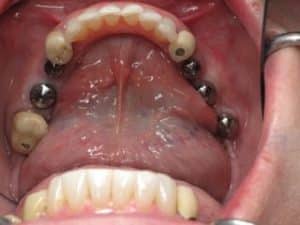
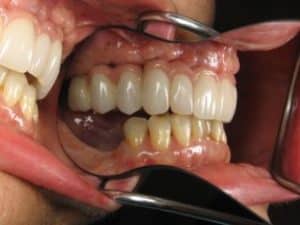

It is more desirable to have less space, which means you have more bone. A CT scan is required for this procedure. Below are some example images.
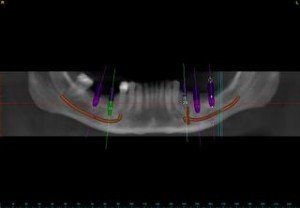
The orange line in this image is where the nerve is. You don’t want the implant to touch the nerve, but you need an implant that is not too short.
The purple and green posts are the virtual implants placed by me when I do the surgery on the computer first. In this case, there is plenty of room, so the nerve can be left alone.
The orange line in this image is where the nerve is. You don’t want the implant in the nerve.
In this image is of one of my patients, you can see how severe the situation is. She has lost all the bone in the back, so the nerve is on top of the gums!
Anytime she bites, it hurts! In her case, she did not want to have implants in the back, so four implants were placed in the front for an overdenture.
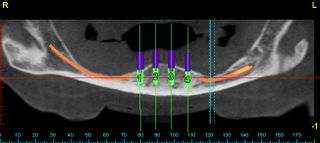
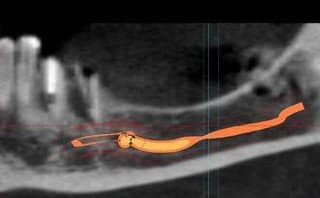
This patient of mine wants back teeth, but there is not enough room from top to bottom for even the shortest of implants.
In addition, her bone is about as thick as a quarter standing on its edge!

The inferior alveolar nerve (orange line in the images), which gives feeling to the lower lip and chin, may need to be moved in order to make room for placement of dental implants to the lower jaw. This procedure is limited to the lower jaw and indicated when teeth are missing in the area of the two back molars and/or the 2nd premolar.
The nerve can also be “bypassed” if there is enough thickness. This means the implant will be placed on the side of the nerve.
Many patients have come to me and said they were told they could not have implants. This procedure can safely be done with a special instrument called a Piezo. This highly specialized instrument cannot cut the nerve!
This procedure is traditionally done with a dental drill…yikes! The risk of damaging the nerve is too high using a drill, so I do not use it.
Even with the piezo, most of my patients experience a temporary numbness of the lip and chin for several weeks. That is considered normal healing. The worst risk possible, is permanent numbness of the lip, chin and teeth on that side. Your ability to move your lip and chin remains mostly normal should this occur.
In my experience, I have never had this occur, but it is a risk of course. All other options, such as blade or sub-periosteal implants, should be considered also.
Nerve repositioning, in my opinion, is the most advanced surgical procedure in the realm of dental implants. An extremely small percentage of dentists in the world perform this procedure.
Dr. Amin has done this procedure for almost 20 years and teaches other dentists.
Bone Grafting Services
Bone Loss | Ridge Modification | Sinus Lift Bone Graft
Extraction Socket Bone Graft | Bone Widening/Expansion
Bone Grafting For Dental Implants
Nerve Repositioning – Lateralization | Platelet Rich Plasma (PRP)
